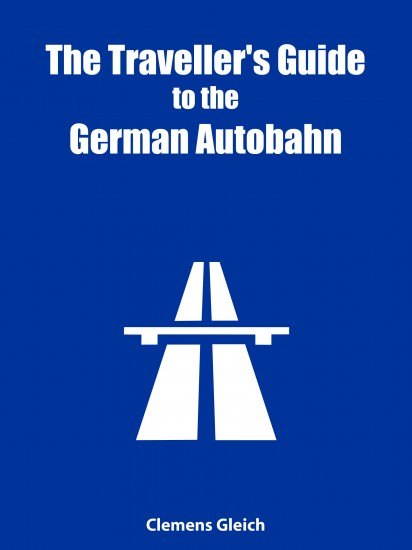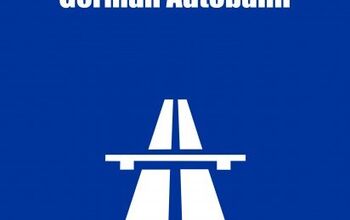The Traveller's Guide to the German Autobahn, Part 1
Buy me now. Only $ 1.11
Let me welcome you to Germany, English-speaking traveler. I know the two reasons you come here for, because I often meet you at the usual places for going fast: There is a) the Nordschleife of the Nürburgring which to you is the only thing interesting about the Ring, and there is b) the Autobahn.
Let’s just leave a) because you already are much more obsessed with the Nürburgring than we are (or is entirely healthy) and let’s proceed straight to the limitless speed potential of b) our motorway network. There is much fun to be had here, but you can also return home frustrated, along with enough speeding tickets to keep you warm in winter. So you may want to listen to the following pro tips from a frequent flyer.
1. The VehicleThere is no general upper speed limit on the Bahn, but there IS a minimum speed a vehicle must be able to achieve in order to be legal for Autobahns. It is 60 kph (about 40 mph), for historical reasons. Today, you still are allowed to enter with a vehicle this slow, but you should do so only if you have a strong death wish. For an Autobahn tourist, the lower threshold should be something normal. You can already have fun at speeds of roundabout 200 kph (125 mph), so a standard 3-Series BMW or even a VW Passat are reasonable choices for beginners.
Most more powerful car s are (mainly for cost reasons) limited to 250 kph (155 mph), so they are a better choice, because faster is better. A very common holiday rental car for Germany is the Porsche 911 in all its indistinguishable manifestations as it doesn’t have such an annoying limiter. A good 911 will give you over 300 kph (190 mph), which is what you should be aiming for to get the most out of your vacation.
If you want to use a motorbike, a BMW S 1000 RR is a good choice for the same reason as the 911. Small warning here: If you never have done 190+ mph on a motorbike before, you will die of the strange physics involved shortly after the moment you need to change direction.
Once you have secured a nice vehicle, it is critically important to make sure no idiot has tinkered with it. The long stretches of high speed you are looking for are totally different from both the racetrack and normal road use. The best example is tires: They will get extremely hot and stretched quite a bit from the high rotational speed for comparatively long stretches of time. A compound that is too soft or a construction that is otherwise unable to cope with these strains will give you the experience of a tire leaving slowly (in chunks flying off) or instantly (in a bang). I can recommend neither of these experiences during a holiday.
The same goes for the aforementioned limiters: Do not let an idiot remove them for you. The stress placed on the mechanical parts doesn’t climb linearly with the speed, but logarithmically. Math words aside, this means: parts that will be fine at 150 mph for years can give you a world of problems after a short time at 200 mph. So if you see the usual outward signs of mental retardation (a badly fitted aftermarket exhaust in a hideous body kit spring to mind) you have a probability of idiotic tinkering that is as near as 100 percent.
Trust an expert. The nice people at AMG for example will remove the limiter on their cars – free of charge for the customer. As they are not idiots, they will then also fit a few stronger suspension parts (still free of charge). This idiot-free way is the one you should opt for. Or go bog-standard: Every car approved for use in Germany has to be able to do its registered top speed until the tank is empty. Yes, we test this. If you want to make really, really sure, get an idiot-untouched German car. They spend much of their development time on the Autobahn and won’t generate too much lift at top speed, a sin a surprising number of cars are guilty of (but then again, I might be too easily surprised by quantities of crap).
And lastly: You will burn a lot of fuel, plus at high rpm coupled with high load, the engine uses extra fuel to cool itself from the inside. To give you an example of what “a lot” means: The major German car mag “Auto Bild” once measured a Porsche Cayenne Turbo S at 67 liters per 100 km of Autobahn speed, meaning: roughly 4 mpg. I’m telling you this to remind you that normal road experiences of how far a particular car will get become meaningless at the speeds you want to go. If the fuel warning light pops on, immediately look for fuel. If there is none close by, you have the options of either reducing your speed to gain distance, or of enjoying the healthy sporting activity of pushing your car.
Next up tomorrow, Part 2: The locations
The German Ministry of High-Speed Transport Propaganda
ACHTUNG: You can come back tomorrow for the next installmentof Ze Traveller’s Guide – OR you can IMMEDIATELY Load the Whole VERDAMMTE thing onto your Kindle for guaranteed distracted driving.
Simply click here for buying the Kindle Single for about a Dollar. If not, I’ will come after YOU. Bertel
More by Clemens Gleich
Latest Car Reviews
Read moreLatest Product Reviews
Read moreRecent Comments
- Jrhurren Worked in Detroit 18 years, live 20 minutes away. Ren Cen is a gem, but a very terrible design inside. I’m surprised GM stuck it out as long as they did there.
- Carson D I thought that this was going to be a comparison of BFGoodrich's different truck tires.
- Tassos Jong-iL North Korea is saving pokemon cards and amibos to buy GM in 10 years, we hope.
- Formula m Same as Ford, withholding billions in development because they want to rearrange the furniture.
- EV-Guy I would care more about the Detroit downtown core. Who else would possibly be able to occupy this space? GM bought this complex - correct? If they can't fill it, how do they find tenants that can? Is the plan to just tear it down and sell to developers?




































Comments
Join the conversation
Visited Germany once circa 2003, had a turbo diesel Alfa wagon loved it! Drove from Dusseldorf to Stuttgart and back in order to tour the Porsche factory. There were a number of stretches with the sweet slash marks. Most of them on our route were 2 lanes which was tough to deal with the insane closing speeds of the passing lane traffic when you are caught behind a truck and want to pull out to pass. The advice my German friend gave me for the trip was that the speed cameras will trip at 20km/h above the posted limit. And also that the left signal trick when flying down the left lane is sort of a d-bag move. BTW what are the "60 80 90" sort of markings on the back of trucks, I assumed it was some sort of speed limited vehicle marking but curious about the details on that.
:) Fun read, thanks!